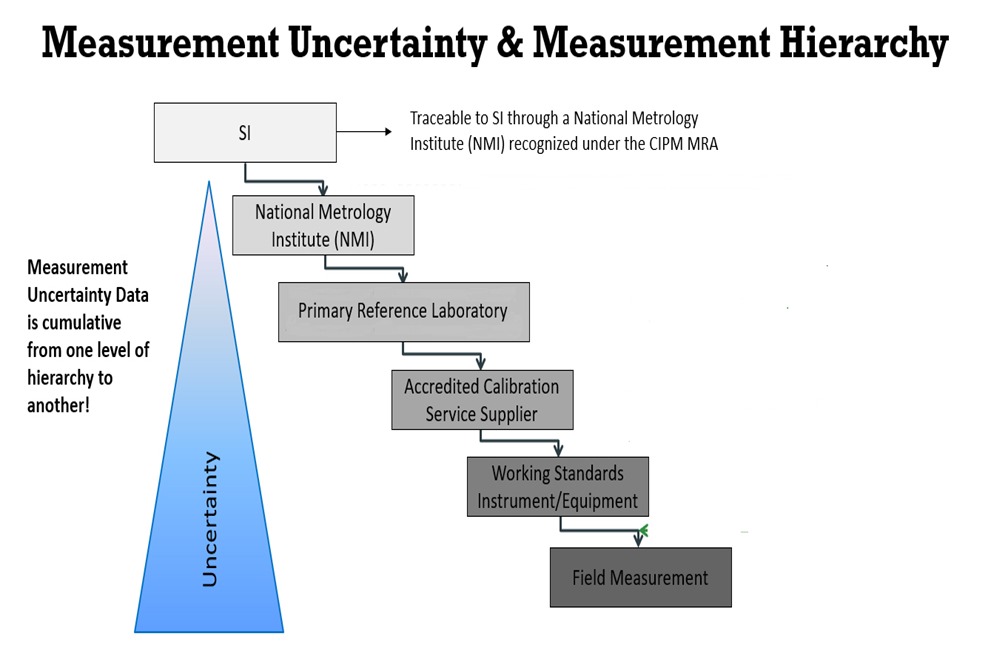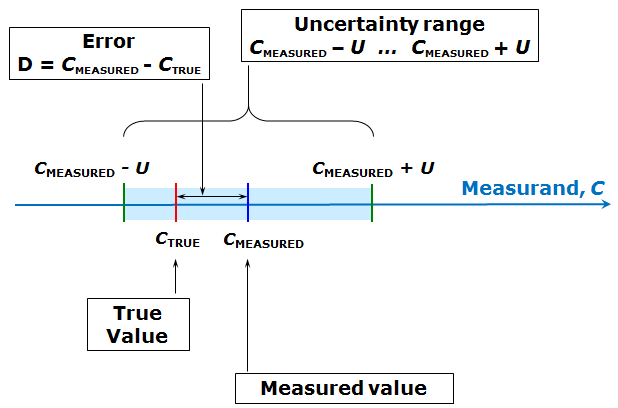Uncertainty in measurement
Measurement uncertainty
Measurement uncertainty is defined as a “parameter, associated with the
result of a measurement, that characterizes the dispersion of the values
that could reasonably be attributed to the measurand” (JCGM).
Measurement uncertainty is a parameter used in data processing for the
description of both the dispersion of the result and its estimated difference
from the accurate value. Frequently, this is simplified to only dispersion,
and measurement uncertainty is obtained using statistical data variance.
As a basic source for uncertainty processing, we refer to the Guide to the
Expression of Uncertainty in Measurement (GUM) available from Bureau
International des Poids et Mesures (BIPM). The basic idea behind it is to
express mathematically the measurement, get all the uncertainties of input
quantities, including both the statistical and systematic effects, and to
calculate an uncertainty of the measurement results.

Uncertainty components
Measurement uncertainty is usually divided in two components:
Type A uncertainty expresses the random error in the data, typically
caused by noise and similar environmental conditions. Its evaluation
is based on statistical tools.

